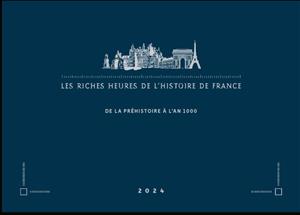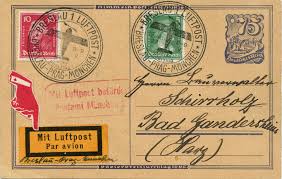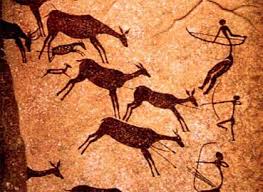Booklet: Great Moments In French History I : Prehistory to 1000 (France 2024)
Great Moments In French History I : Prehistory to 1000 (France 2024)
04 September (France ) within release Great Moments In French History I : Prehistory to 1000 (2024 goes into circulation Booklet Great Moments In French History I : Prehistory to 1000 face value 95 Euro
| Booklet Great Moments In French History I : Prehistory to 1000 in catalogues | |
|---|---|
| Colnect codes: | Col: FR 2024.09.04-01 |
Booklet is horizontal format.
Also in the issue Great Moments In French History I : Prehistory to 1000 (2024:
- Booklet Pane - Abbey of Saint Wendrille Design of 1949 face value 9;
- Booklet Pane - Design of Saint Remy Villa Ruins of 1957 face value 9;
- Booklet Pane - Design of Venus of Brassempouy Stamp of 1976 face value 5;
- Booklet Pane - Gallo-Roman Post Design of 1963 face value 9;
- Booklet - Great Moments In French History I : Prehistory to 1000 face value 95;
- Booklet Pane - Gregory of Tours Design of 1939 face value 9;
- Booklet Pane - Landévennec Abbey Design of 1985 face value 9;
- Booklet Pane - Lyon 2000 Years Design of 1957 face value 9;
- Booklet Pane - Pope Sylvester II (Gerbert d'Aurillac) Design of 1964 face value 9;
- Booklet Pane - Roman Triumphal Arch, Orange, Design of 1938 face value 9;
- Booklet Pane - Saint Benoit Design of 1980 face value 9;
- Booklet Pane - Sainte Croix Abbey, Poitiers Design of 1952 face value 9;
- Stamp - Design of Venus of Brassempouy Stamp of 1976 face value 5;
- Stamp - Abbey of Saint Wendrille Design of 1949 face value 1.29;
- Stamp - Abbey of Saint Wendrille Design of 1949 face value 1.29;
- Stamp - Abbey of Saint Wendrille Design of 1949 face value 1.96;
- Stamp - Abbey of Saint Wendrille Design of 1949 face value 1.96;
- Stamp - Abbey of Saint Wendrille Design of 1949 face value 2.50;
- Stamp - Design of Saint Remy Villa Ruins of 1957 face value 1.29;
- Stamp - Design of Saint Remy Villa Ruins of 1957 face value 1.29;
- Stamp - Design of Saint Remy Villa Ruins of 1957 face value 1.96;
- Stamp - Design of Saint Remy Villa Ruins of 1957 face value 1.96;
- Stamp - Design of Saint Remy Villa Ruins of 1957 face value 2.50;
- Stamp - Gallo-Roman Post Design of 1963 face value 1.29;
- Stamp - Gallo-Roman Post Design of 1963 face value 1.29;
- Stamp - Gallo-Roman Post Design of 1963 face value 1.96;
- Stamp - Gallo-Roman Post Design of 1963 face value 1.96;
- Stamp - Gallo-Roman Post Design of 1963 face value 2.50;
- Stamp - Gregory of Tours Design of 1939 face value 1.29;
- Stamp - Gregory of Tours Design of 1939 face value 1.29;
- Stamp - Gregory of Tours Design of 1939 face value 1.96;
- Stamp - Gregory of Tours Design of 1939 face value 1.96;
- Stamp - Gregory of Tours Design of 1939 face value 2.50;
- Stamp - Landévennec Abbey Design of 1985 face value 1.29;
- Stamp - Landévennec Abbey Design of 1985 face value 1.29;
- Stamp - Landévennec Abbey Design of 1985 face value 1.96;
- Stamp - Landévennec Abbey Design of 1985 face value 1.96;
- Stamp - Landévennec Abbey Design of 1985 face value 2.50;
- Stamp - Lyon 2000 Years Design of 1957 face value 1.29;
- Stamp - Lyon 2000 Years Design of 1957 face value 1.29;
- Stamp - Lyon 2000 Years Design of 1957 face value 1.96;
- Stamp - Lyon 2000 Years Design of 1957 face value 1.96;
- Stamp - Lyon 2000 Years Design of 1957 face value 2.50;
- Stamp - Pope Sylvester II (Gerbert d'Aurillac) Design of 1964 face value 1.29;
- Stamp - Pope Sylvester II (Gerbert d'Aurillac) Design of 1964 face value 1.29;
- Stamp - Pope Sylvester II (Gerbert d'Aurillac) Design of 1964 face value 1.96;
- Stamp - Pope Sylvester II (Gerbert d'Aurillac) Design of 1964 face value 1.96;
- Stamp - Pope Sylvester II (Gerbert d'Aurillac) Design of 1964 face value 2.50;
- Stamp - Roman Triumphal Arch, Orange, Design of 1938 face value 1.29;
- Stamp - Roman Triumphal Arch, Orange, Design of 1938 face value 1.29;
- Stamp - Roman Triumphal Arch, Orange, Design of 1938 face value 1.96;
- Stamp - Roman Triumphal Arch, Orange, Design of 1938 face value 1.96;
- Stamp - Roman Triumphal Arch, Orange, Design of 1938 face value 2.50;
- Stamp - Saint Benoit Design of 1980 face value 1.29;
- Stamp - Saint Benoit Design of 1980 face value 1.29;
- Stamp - Saint Benoit Design of 1980 face value 1.96;
- Stamp - Saint Benoit Design of 1980 face value 1.96;
- Stamp - Saint Benoit Design of 1980 face value 2.50;
- Stamp - Sainte Croix Abbey, Poitiers Design of 1952 face value 1.29;
- Stamp - Sainte Croix Abbey, Poitiers Design of 1952 face value 1.29;
- Stamp - Sainte Croix Abbey, Poitiers Design of 1952 face value 1.96;
- Stamp - Sainte Croix Abbey, Poitiers Design of 1952 face value 1.96;
- Stamp - Sainte Croix Abbey, Poitiers Design of 1952 face value 2.50;
Booklet Great Moments In French History I : Prehistory to 1000 it reflects the thematic directions:
Archaeology or archeology[a] is the study of human activity through the recovery and analysis of material culture. The archaeological record consists of artifacts, architecture, biofacts or ecofacts, sites, and cultural landscapes. Archaeology can be considered both a social science and a branch of the humanities. It is usually considered an independent academic discipline, but may also be classified as part of anthropology (in North America – the four-field approach), history or geography
Architecture (Latin architectura, from the Greek ἀρχιτέκτων arkhitekton "architect", from ἀρχι- "chief" and τέκτων "builder") is both the process and the product of planning, designing, and constructing buildings and other physical structures. Architectural works, in the material form of buildings, are often perceived as cultural symbols and as works of art. Historical civilizations are often identified with their surviving architectural achievements.
A historian is a person who studies and writes about the past and is regarded as an authority on it. Historians are concerned with the continuous, methodical narrative and research of past events as relating to the human species; as well as the study of all history in time. Some historians are recognized by publications or training and experience. "Historian" became a professional occupation in the late nineteenth century as research universities were emerging in Germany and elsewhere.
A monument is a type of structure that was explicitly created to commemorate a person or event, or which has become relevant to a social group as a part of their remembrance of historic times or cultural heritage, due to its artistic, historical, political, technical or architectural importance. Examples of monuments include statues, (war) memorials, historical buildings, archaeological sites, and cultural assets. If there is a public interest in its preservation, a monument can for example be listed as a UNESCO World Heritage Site. The Palgrave Encyclopedia of Cultural Heritage and Conflict gives the next definition of monument:
Postal history is the study of postal systems and how they operate and, or, the study of the use of postage stamps and covers and associated postal artifacts illustrating historical episodes in the development of postal systems. The term is attributed to Robson Lowe, a professional philatelist, stamp dealer and stamp auctioneer, who made the first organised study of the subject in the 1930s and described philatelists as "students of science", but postal historians as "students of humanity". More precisely, philatelists describe postal history as the study of rates, routes, markings, and means (of transport).
Prehistory, also called pre-literary history, is the period of human history between the first known use of stone tools by hominins c. 3.3 million years ago and the beginning of recorded history with the invention of writing systems. The use of symbols, marks, and images appears very early among humans, but the earliest known writing systems appeared c. 5,200 years ago. It took thousands of years for writing systems to be widely adopted, with writing spreading to almost all cultures by the 19th century. The end of prehistory therefore came at different times in different places, and the term is less often used in discussing societies where prehistory ended relatively recently.
n Christian belief, a saint is a person who is recognized as having an exceptional degree of holiness, likeness, or closeness to God. However, the use of the term saint depends on the context and denomination. In Catholic, Eastern Orthodox, Anglican, Oriental Orthodox, and Lutheran doctrine, all of their faithful deceased in Heaven are considered to be saints, but a selected few are considered worthy of greater honor or emulation. Official ecclesiastical recognition, and veneration, is conferred on some denominational saints through the process of canonization in the Catholic Church or glorification in the Eastern Orthodox Church after their approval.In many Protestant denominations saint refers broadly to any holy Christian, without special recognition or selection.







